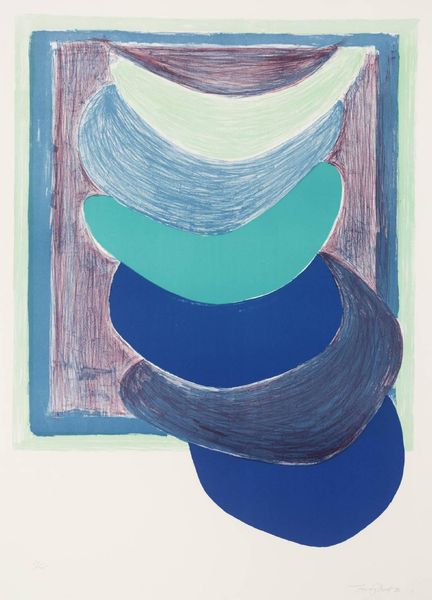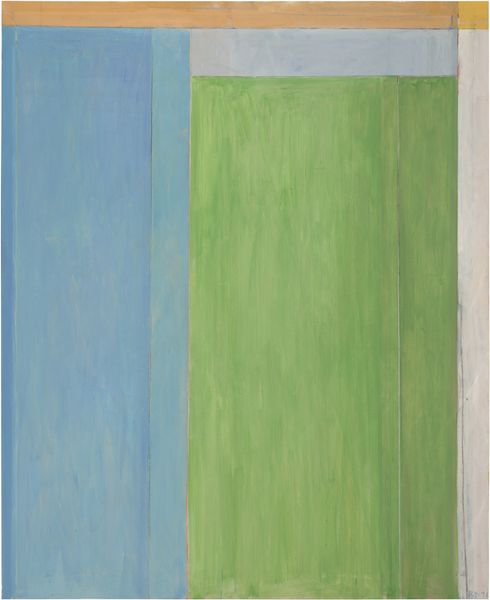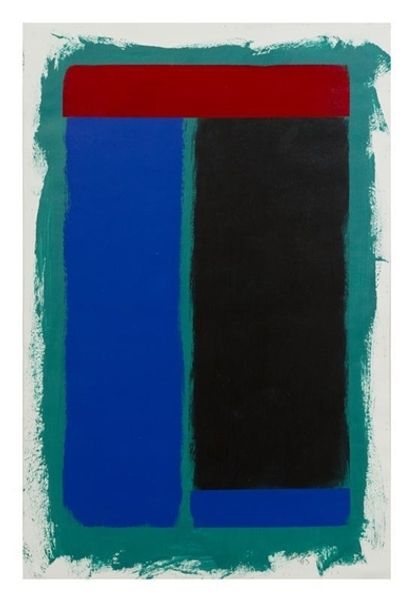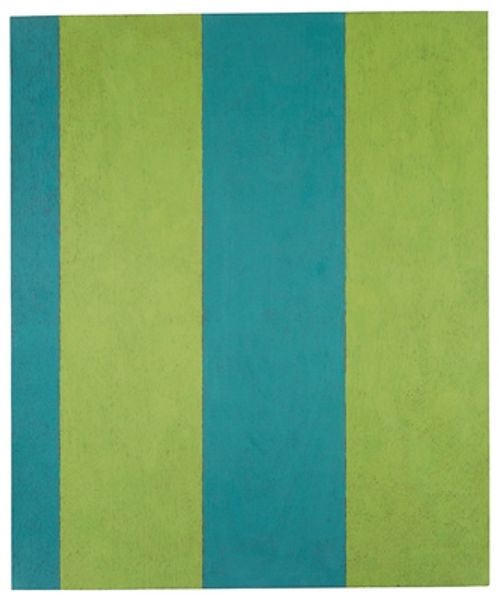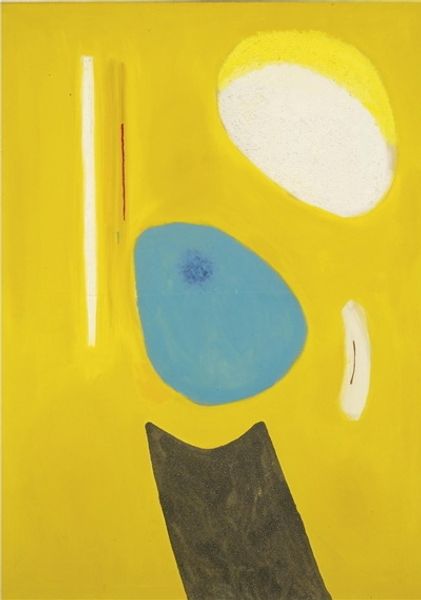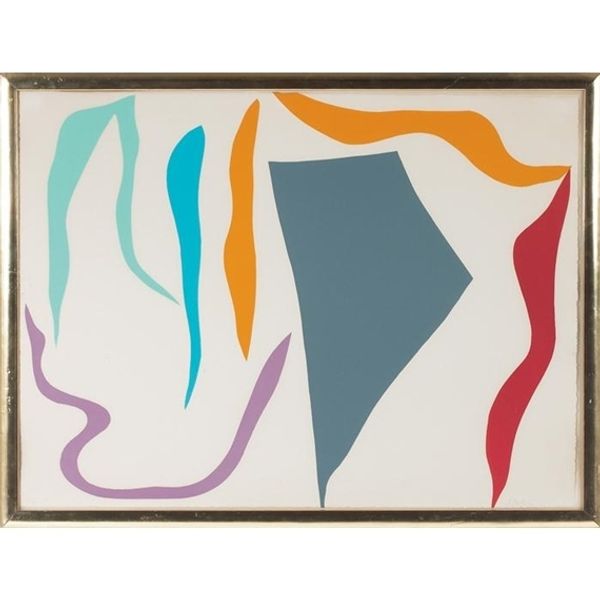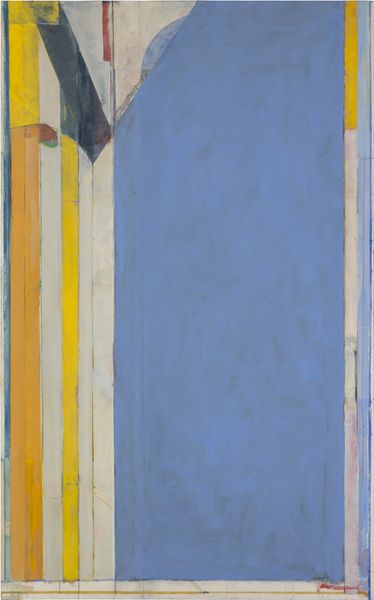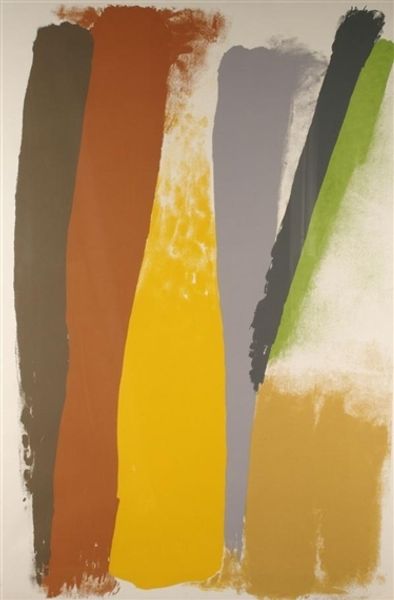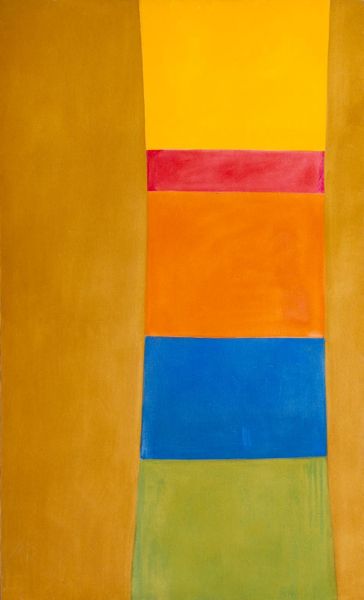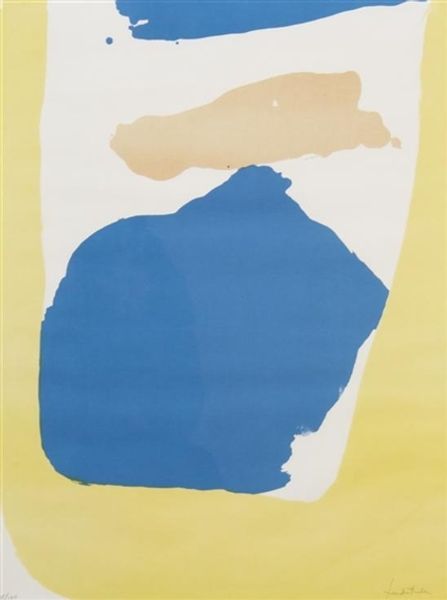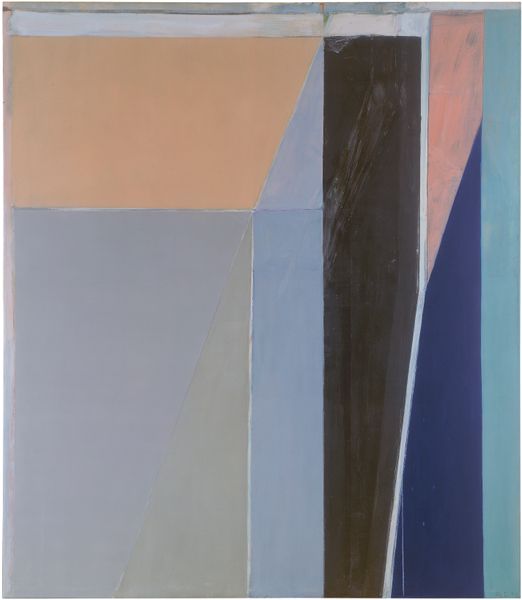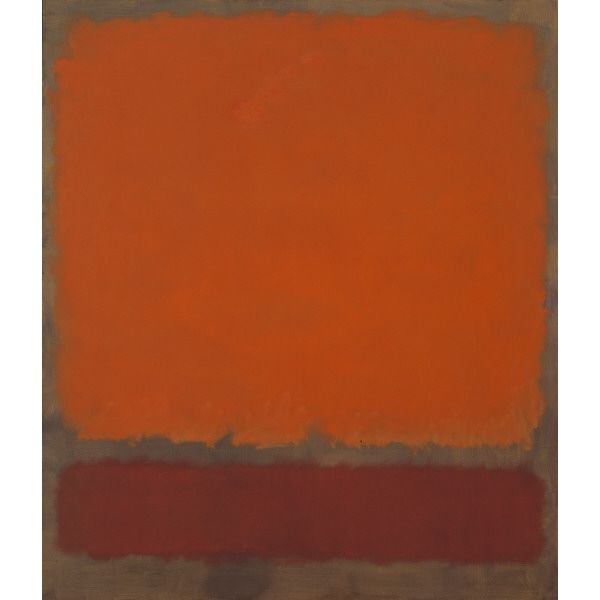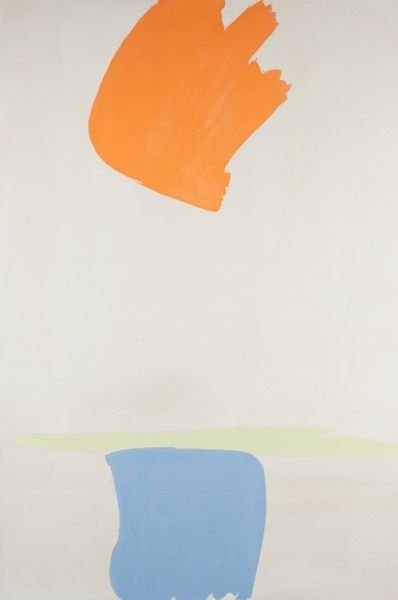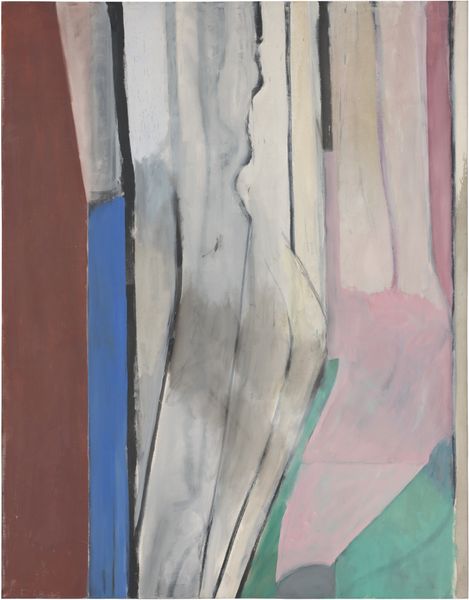
painting, acrylic-paint
#
abstract-expressionism
#
painting
#
acrylic-paint
#
form
#
geometric-abstraction
#
abstraction
#
line
#
modernism
Copyright: Friedel Dzubas,Fair Use
Curator: The painting we're looking at is titled "Duo," created by Friedel Dzubas in 1965, using acrylic paint. It's an example of his abstract expressionist style. Editor: My initial reaction is one of serenity, surprisingly. The soft blue and rounded forms give it a gentle, almost meditative quality. It feels balanced but also incomplete somehow. Curator: Dzubas' work in this period very much engaged with the formal possibilities of color and form, emerging from Clement Greenberg's theories. Considering this was painted in the mid-60s, after movements like the Civil Rights Act, there’s also something to be said about how abstraction can, at times, both obscure and subtly address societal tensions through purely aesthetic means. The very title "Duo" points to relationships, be they harmonious or dissonant. Editor: Yes, and thinking about duos more broadly – male/female, black/white – you could read this as a dialogue, though the visual language seems quite minimal for explicit social commentary. More a hint of tension than a statement. Curator: The socio-political context definitely frames how we read abstract art of the era. However, let's also acknowledge Dzubas’ exploration of the medium itself. He was concerned with how color interacts on the canvas, creating depth and texture even in what appears to be a very simple composition. It's a deliberate attempt to push the boundaries of painting at the time, even pushing beyond pure aesthetics, which in turn is making its own sociopolitical statement. Editor: Precisely. The emphasis on form pushes the boundary beyond what can or cannot be put in a form and presented in an artistic space, for social or non-social statements. These all carry their meaning. What does this say about identity then? It makes me ponder whether he’s exploring a push and pull of contrasting elements—where do those forms and elements overlap within an abstract framework of the 'self?' Curator: That’s a perfect prompt. We are invited to reflect on those dialogues without needing representational form as the point of departure. Editor: So, in closing, "Duo" is not just an exploration of form and color; it is also a subtle reflection of its socio-historical milieu, inviting us to question the connections and dialogues around us. Curator: A challenge to deconstruct dialogues without spoken word, allowing the simplicity of Dzubas’ language and technique to be our guide.
Comments
No comments
Be the first to comment and join the conversation on the ultimate creative platform.
